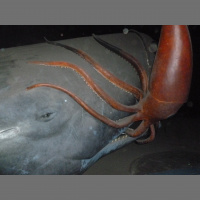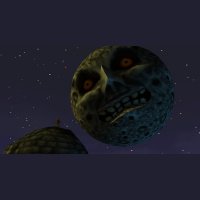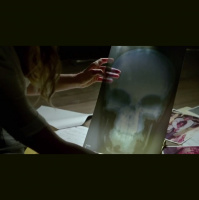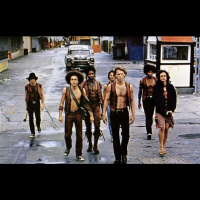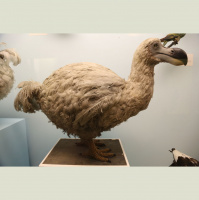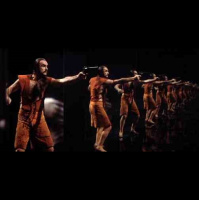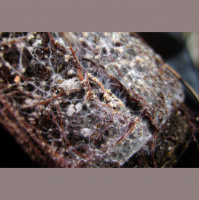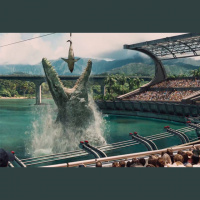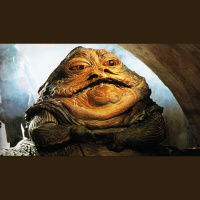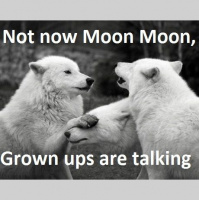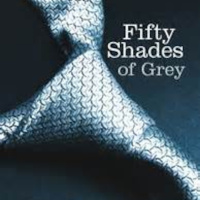Synopsis
A group of fresh faced scientists have biweekly informal discussions about evolutionary biology and palaeontology... over beer.
Episodes
-
Podcast 92 - The Root of the Problem
04/09/2016 Duration: 01h07minThe gang discusses two papers that describe the root systems of the first "tree-like" plants, the giant lycopsids from the Carboniferous. Also, Amanda's cat finds a brand new toy, James over commits to a bit, and Curt pulls the strings behind the scene. References: Thomas, Barry A., and Leyla J. Seyfullah. "Stigmaria Brongniart: a new specimen from Duckmantian (Lower Pennsylvanian) Brymbo (Wrexham, North Wales) together with a review of known casts and how they were preserved." Geological Magazine 152.05 (2015): 858-870. Hetherington, Alexander J., Christopher M. Berry, and Liam Dolan. "Networks of highly branched stigmarian rootlets developed on the first giant trees." Proceedings of the National Academy of Sciences (2016): 201514427.
-
Podcast 91 - A Conservation Conversation; Evolution with a Human Touch
21/08/2016 Duration: 01h29minThe gang discusses two papers that study how human beings have affected the evolutionary trajectories of other organisms. Meanwhile, Amanda paints an imaginative scene, James describes the perfect human world, and Curt wins the most obscure movie reference. Music: "Central Park" by Charles Ives, used in accordance with Fair Use. References: LaZerte, Stefanie E., Hans Slabbekoorn, and Ken A. Otter. "Learning to cope: vocal adjustment to urban noise is correlated with prior experience in black-capped chickadees." Proc. R. Soc. B. Vol. 283. No. 1833. The Royal Society, 2016.
-
Podcast 90 - Big Small Cats
07/08/2016 Duration: 01h27minThe gang discusses two papers that look at the evolutionary history of cats. Is there a trend towards an optimal cat size in evolution? Meanwhile, Curt admits to an embarrassing lack of 80's knowledge, Amanda wants to expand her cat menagerie, and James demonstrates his vocal range. WARNING TO HEADPHONE USERS LOUD NOISE DURING THE FIRST MINUTE OF THE PODCAST. References: Tseng, Z. Jack, et al. "Himalayan fossils of the oldest known pantherine establish ancient origin of big cats." Proc. R. Soc. B. Vol. 281. No. 1774. The Royal Society, 2014. Cuff, A. R., et al. "Big cat, small cat: reconstructing body size evolution in living and extinct Felidae." Journal of evolutionary biology 28.8 (2015): 1516-1525.
-
Podcast 89 - Spicy Maple-Glazed Wings; A Discussion on Fossils in Amber
24/07/2016 Duration: 01h26minThe gang discusses two examples of cool animals trapped in amber. Meanwhile, James draws a line in the sand concerning food, Amanda can't decide which fictional animal is the cutest, Curt lies, and the gang gets dark while discussing children's fantasy fiction. References: Perrichot, Vincent, Bo Wang, and Michael S. Engel. "Extreme Morphogenesis and Ecological Specialization among Cretaceous Basal Ants." Current Biology 26.11 (2016): 1468-1472. Xing, Lida, et al. "Mummified precocial bird wings in mid-Cretaceous Burmese amber." Nature Communications 7 (2016).
-
Podcast 88 - Fossil Murder Mysteries
10/07/2016 Duration: 01h04minThe gang don their deerstalkers and dive into some palaeontological cold cases. Mystery and murder abound as they explore evidence for predation in the fossil record, with a supporting cast of stingrays, crabs, and some of Earth's oldest organisms. Also, James explains how terrifying the world is, Curtis reminds everyone that Deep Blue Sea is a thing, and Amanda puts the cat centre stage. References: Calderwood, J. & Sigwart, J. D. "Broken pieces: can variable ecological interactions be deduced from the remains of crab attacks on bivalve shells?" Lethaia (2016): 10.1111/let.12178. Grun, T. B.. "Echinoid test damage by a stingray predator" Lethaia (2015): 10.1111/let.12165. Porter, S. M. "TIny vampires in ancient seas: evidence for predation via perforation in fossils from the 780–740 million-year-old Chuar Group, Grand Canyon, USA." Proceedings of the Royal Society B (2016): 10.1098/rspb.2016.0221.
-
Podcast 87 - Leaving a Mark; Trace Fossil Changes Through Time
26/06/2016 Duration: 01h24minEverybody is back in the same zip code for an extra special episode focusing on fish faces and evolving trace fossils through time. Also, James enjoys the perks of podcasting in person, Amanda decides to be as general as possible, and Curt decides to aggressively Godwin's Law the podcast. Also, the gang invents a mixed drink on air and then things get.... weird. This episode is pretty much all over the place. "The Ichnofacies": 1 part Dark Spiced Rum, 1 part agave syrup, served over ice "Hyperfun" Kevin MacLeod (incompetech.com) Licensed under Creative Commons: By Attribution 3.0 http://creativecommons.org/licenses/by/3.0/ References: Szrek, Piotr, et al. "A glimpse of a fish face—An exceptional fish feeding trace fossil from the Lower Devonian of the Holy Cross Mountains, Poland."Palaeogeography, Palaeoclimatology, Palaeoecology 454 (2016): 113-124. Lehane, James R., and A. A. Ekdale. "Morphometric analysis of graphoglyptid trace fossils in two dimensions: implications for behavioral evolution in the deep s
-
Podcast 86 - Echolocation in the Fossil Record
12/06/2016 Duration: 01h14minThe gang discusses two papers that use functional morphology to determine when echolocation evolved in two groups of mammals, whales and bats. Also, Curt rattles off a wikipedia page on hamburgers, James fights against physics, and Amanda would rather talk about how terrifying Basilosaurus is. Also, to cut this off at the pass, a correction. Bats are the "SECOND" most diverse mammal group and rodents are the most diverse. References: Simmons, Nancy B., et al. "Primitive Early Eocene bat from Wyoming and the evolution of flight and echolocation." Nature 451.7180 (2008): 818-821. Park, Travis, Erich MG Fitzgerald, and Alistair R. Evans. "Ultrasonic hearing and echolocation in the earliest toothed whales." Biology letters 12.4 (2016): 20160060.
-
Podcast 85 - Hot Blooded; Studying Fossil Metabolism
29/05/2016 Duration: 01h16minIn this episode, the gang discusses two papers that use morphological and chemical proxies to understand the metabolism of fossil animals. Did all early tetrapods breathe through their skin? Were mosasaurs warm blooded? Also, James accidentally goes full stealth, Amanda instigates a Civil War, and Curt gets not-it'ed into bumbling through explaining geochemistry. References: Witzmann, Florian. "CO2‐metabolism in early tetrapods revisited: inferences from osteological correlates of gills, skin and lung ventilation in the fossil record." Lethaia (2015). Harrell, T. Lynn, Alberto Pérez‐Huerta, and Celina A. Suarez. "Endothermic mosasaurs? Possible thermoregulation of Late Cretaceous mosasaurs (Reptilia, Squamata) indicated by stable oxygen isotopes in fossil bioapatite in comparison with coeval marine fish and pelagic seabirds." Palaeontology59.3 (2016): 351-363.
-
Podcast 84 - Jawless Fish and Spider Butts; Searching for Ancestral Forms in Fossil Data
15/05/2016 Duration: 01h09minIn this episode, the gang discusses two papers that try and piece apart the complicated evolutionary history of cyclostomes (lampreys and hagfish) and spiders. What did the ancestors of these things look like? Also, Amanda comes up with a lucrative business proposal, James hijacks the podcast to make a bold statement, and Curt is skeptical of history. References: Ota, Kinya G., et al. "Identification of vertebra-like elements and their possible differentiation from sclerotomes in the hagfish." Nature communications 2 (2011): 373. Oisi, Yasuhiro, et al. "Craniofacial development of hagfishes and the evolution of vertebrates." Nature 493.7431 (2013): 175-180. Garwood, Russell J., et al. "Almost a spider: a 305-million-year-old fossil arachnid and spider origins." Proc. R. Soc. B. Vol. 283. No. 1827. The Royal Society, 2016.
-
Podcast 83 - Dead End Conversations; The Evolutionary Impact of Ecological Specialization
01/05/2016 Duration: 01h38minIn this episode, the gang discusses two papers about the long term macroevolutionary effects of ecological specialization. Is specialization on a specific ecology an evolutionary dead end? The gang attempts to answer that question, but they keep getting distracted. Also, James shares life experiences, Amanda imagines a nightmarish future for James, and Curt workshops the plot of a new epic animated experience. References: Day, Emma H., Xia Hua, and Lindell Bromham. "Is specialization an evolutionary dead end? Testing for differences in speciation, extinction and trait transition rates across diverse phylogenies of specialists and generalists." Journal of Evolutionary Biology (2016). Burin, Gustavo, et al. "Omnivory in birds is a macroevolutionary sink."Nature Communications 7 (2016).
-
Podcast 82 - So Like Majora's Mask; Astrobiology and Cyclicity of Extinction
17/04/2016 Duration: 01h15minIn this episode, we wanted to discuss large-scale astrobiological patterns and cyclicity of extinction, but instead we picked a few papers that weren't directly focused on those themes. So join us as we talk around two astrobiology papers! Meanwhile, James nearly becomes a mass extinction, Curt considers the psychological health of the hero of Hyrule, and Amanda gives her cat some tough love. References: Nimura, Tokuhiro, Toshikazu Ebisuzaki, and Shigenori Maruyama. "End-cretaceous cooling and mass extinction driven by a dark cloud encounter."Gondwana Research (2016). Whitmire, Daniel P. "Periodic mass extinctions and the Planet X model reconsidered." Monthly Notices of the Royal Astronomical Society: Letters455.1 (2016): L114-L117.
-
Podcast 81 - Niche Ontogeny; The Hero This City Deserves
03/04/2016 Duration: 01h32minIn this episode the gang discusses two papers about how niche breadth can change as organisms grow, with one paper looking at modern organisms and the other focusing on extinct fossil taxa. Also, James is fascinated by New York's greatest "hero", Amanda becomes "enthusiastic" in her defense of a topic, and witness the dark middle chapter of the podcast as Curt "ruins everything". We also have an in-depth discussion on what can and cannot be classified as a pie.... it's one of those podcasts. Skip to 12 minutes in if you want to start learning about science. References Dick, Daniel G., Günter Schweigert, and Erin E. Maxwell. "Trophic niche ontogeny and palaeoecology of early Toarcian Stenopterygius (Reptilia: Ichthyosauria)." Palaeontology (2016). Purwandana, Deni, et al. "Ecological allometries and niche use dynamics across Komodo dragon ontogeny." The Science of Nature 103.3-4 (2016): 1-11.
-
Podcast 80 - The Severity of The Sixth Mass Extinction, A Belated Birthday Fun-Time Celebration
20/03/2016 Duration: 01h26minIn this episode, the gang celebrates its third year of podcasting by discussing two papers that use the fossil record to determine how our current biodiversity crisis stacks up to past mass extinctions. Also, Amanda deals with abandonment, James explore New York, and Curt gives life lessons from 70s film. "Mr Mealeys Mediocre Machine" Kevin MacLeod (incompetech.com) Licensed under Creative Commons: By Attribution 3.0http://creativecommons.org/licenses/by/3.0/ References: Hull, Pincelli M., Simon AF Darroch, and Douglas H. Erwin. "Rarity in mass extinctions and the future of ecosystems." Nature 528.7582 (2015): 345-351. Plotnick, Roy E., Felisa A. Smith, and S. Kathleen Lyons. "The fossil record of the sixth extinction." Ecology letters (2016).
-
Podcast 79 - All the Cool Stuff is Dead; On Dodos and Glyptodonts
06/03/2016 Duration: 01h13minIn this episode the gang talks about Dodo brains and Glyptodont genes. Meanwhile, James makes an unappreciated joke, Curt tries to create an "internet hug", and Amanda learns about The Batman. References: Gold, Maria Eugenia Leone, Estelle Bourdon, and Mark A. Norell. "The first endocast of the extinct dodo (Raphus cucullatus) and an anatomical comparison amongst close relatives (Aves, Columbiformes)." Zoological Journal of the Linnean Society (2016). Delsuc, Frédéric, et al. "The phylogenetic affinities of the extinct glyptodonts." Current Biology 26.4 (2016): R155-R156.
-
Podcast 78 - History Repeats, Bizarre Convergence in Fossil Animals
21/02/2016 Duration: 01h09minThe gang discusses three papers that detail some truly unique examples of morphological convergence; from brachiopods that look like corals to bovids with dinosaurian nasal crests. Also, James designs some conspicuous Mario levels, Amanda wins an argument that "never happened", Curt is excluded from a business venture, and everything comes back to Zardoz. References: Streng, Michael, et al. "A new family of Cambrian rhynchonelliformean brachiopods (Order Naukatida) with an aberrant coral‐like morphology."Palaeontology 59.2 (2016): 269-293. Labandeira, Conrad C., et al. "The evolutionary convergence of mid-Mesozoic lacewings and Cenozoic butterflies." Proc. R. Soc. B. Vol. 283. No. 1824. The Royal Society, 2016. O’Brien, Haley D., et al. "Unexpected Convergent Evolution of Nasal Domes between Pleistocene Bovids and Cretaceous Hadrosaur Dinosaurs." Current Biology (2016).
-
Podcast 77 - Old and Burny, A Discussion of Fossil Fungi
07/02/2016 Duration: 01h15minIn this episode, we discuss the complex relationship between fungi and earth systems processes through time, focusing on the potential role of fungi in facilitating early terrestrialization and the proposed hypothesis that fungi may (or may not) have been indirectly responsible for the Carboniferous coal swamps. Also, Amanda aggressively segues, Curt derails the conversation into navel gazing about the nature of scientific fields, and James goes on a fascinating journey from Angry to Annoyed finally ending up at Resentfully Happy. "Aces High" Kevin MacLeod (incompetech.com) Licensed under Creative Commons: By Attribution 3.0http://creativecommons.org/licenses/by/3.0/ References: Redecker, Dirk, Robin Kodner, and Linda E. Graham. "Glomalean fungi from the Ordovician." Science 289.5486 (2000): 1920-1921. Heckman, Daniel S., et al. "Molecular evidence for the early colonization of land by fungi and plants." Science 293.5532 (2001): 1129-1133. Lücking, Robert, et al. "Fungi evolved right on track." Mycologia 101
-
Podcast 76 - In Which James and Amanda are Slightly too Inebriated to Discuss Mesozoic Fossils
24/01/2016 Duration: 01h18minIn this episode we discuss a grab bag of Mesozoic papers, ranging from potential dinosaur mating dances to large-eyed mosasaurs. And after a fairly sober month, Amanda and James dive headfirst into the highest alcohol content beer they have with expected disastrous results. Come and join us as Amanda tries her hand at ASMR, James uncovers a plot to destroy him, and Curt enjoys being the most sober person in the room. Also we keep talking about The Thing for some reason... References Lockley, Martin G., et al. "Theropod courtship: large scale physical evidence of display arenas and avian-like scrape ceremony behaviour by Cretaceous dinosaurs." Scientific reports 6 (2016). Konishi, Takuya, et al. "A new halisaurine mosasaur (Squamata: Halisaurinae) from Japan: the first record in the western Pacific realm and the first documented insights into binocular vision in mosasaurs." Journal of Systematic Palaeontology (2015): 1-31.
-
Podcast 75 - New Years Resolutions and Sponges Y'all!
10/01/2016 Duration: 43minWe ring in the new year by talking about new research on the evolutionary history of early animals. Also, Amanda makes some very deep cartoon cuts, James manages an emergency, and Curt makes impossible resolutions. References: Pisani, Davide, et al. "Genomic data do not support comb jellies as the sister group to all other animals." Proceedings of the National Academy of Sciences 112.50 (2015): 15402-15407. Erwin, Douglas H. "Early metazoan life: divergence, environment and ecology." Phil. Trans. R. Soc. B 370.1684 (2015): 20150036.
-
Podcast 74 - Early Tetrapods Awaken
27/12/2015 Duration: 53minIn this episode, we discuss two papers about early tetrapods/tetrapodomorph taxa, Tiktaalik and Ichthyostega, and what new findings suggest about their locomotion. Also, Curt makes a suspicious delivery, and James desperately tries to feed Amanda "spoilers" for the new Star Wars. EDITOR'S NOTE: While I cannot confirm that any of James's spoilers are indeed accurate, they seem highly unlikely to be true (although if they are true, then the film they suggest is AMAZING). Up goer five simple text summary: The group takes time out from a time when not much is meant to happen to talk about some animals with big arms that were some of the first animals with four legs to come on to land. In between talking about a space movie where people use guns that fire light to show how they feel about each other, the group looks at a paper looking at the back end of an animal that had before been known only from its front. This new part of the animal shows that it had very small back legs that still looked more like for use i
-
Podcast 73 - Sincere Apologies to All Ammonite Workers
13/12/2015 Duration: 01h18minIn this episode, we discuss two papers that describe ammonite feeding habits. Meanwhile, Amanda gets into a boxing match, Curt is introduced to Moon Moon, and James is completely derailed by an animal.... again. Also, James invents a completely ridiculous life strategy for ammonites (34 :30) that Curt is just drunk enough to truly appreciate. Simple text summary The groups looks at two papers to find out what old animals with many arms and a hard house that they moved about the water in ate. The first paper studies old animals that have been looked at with a computer to see inside them and look at their teeth. The study shows that some of these many armed house carrying animals ate tiny animals that fill the water. The other paper looks at the mouths of other types of animals with arms that carry houses on them and finds that they are very different. This paper shows that several different types of animals with arms that cary houses ate different things, and that the oldest type of eating is still seen tod







